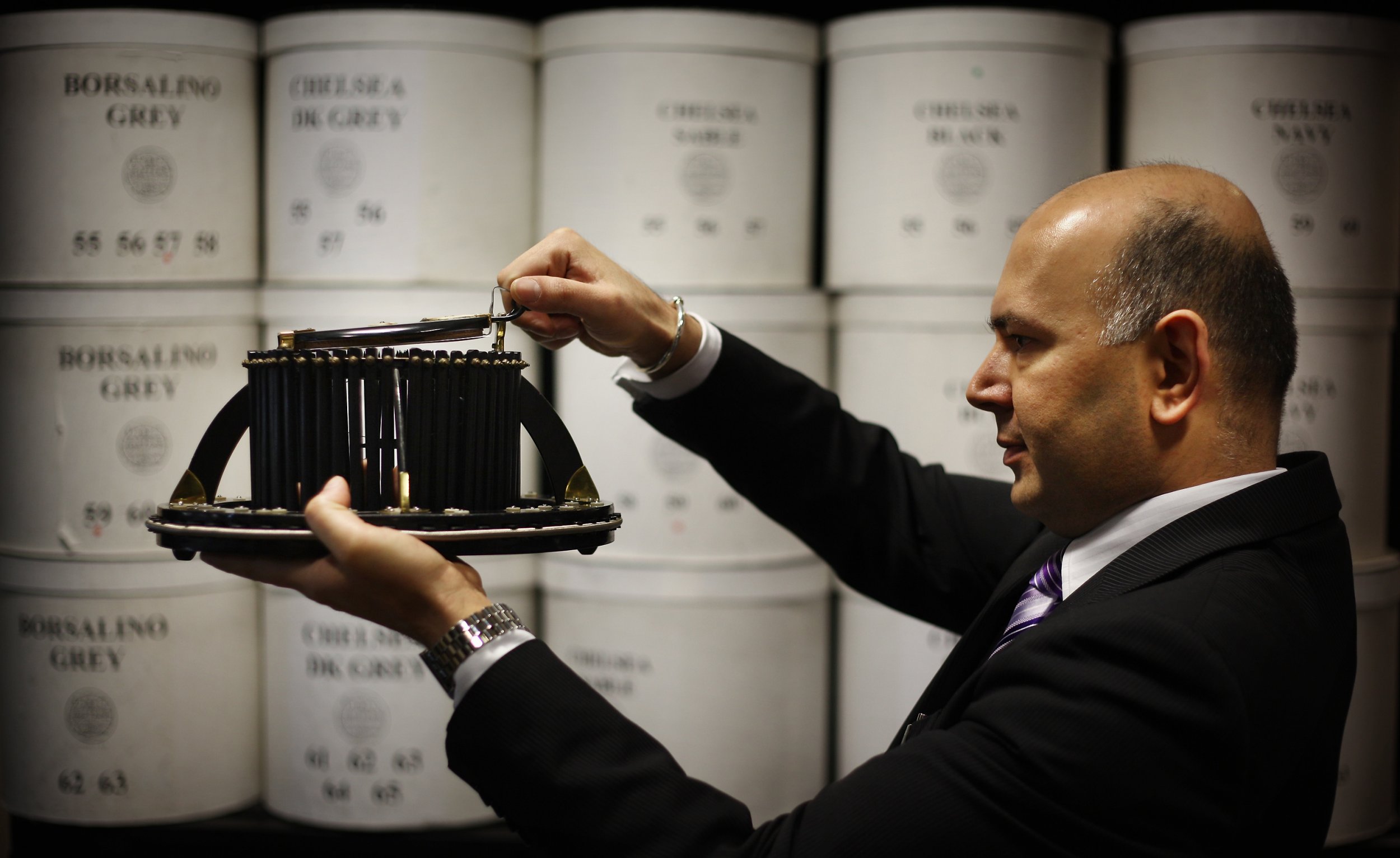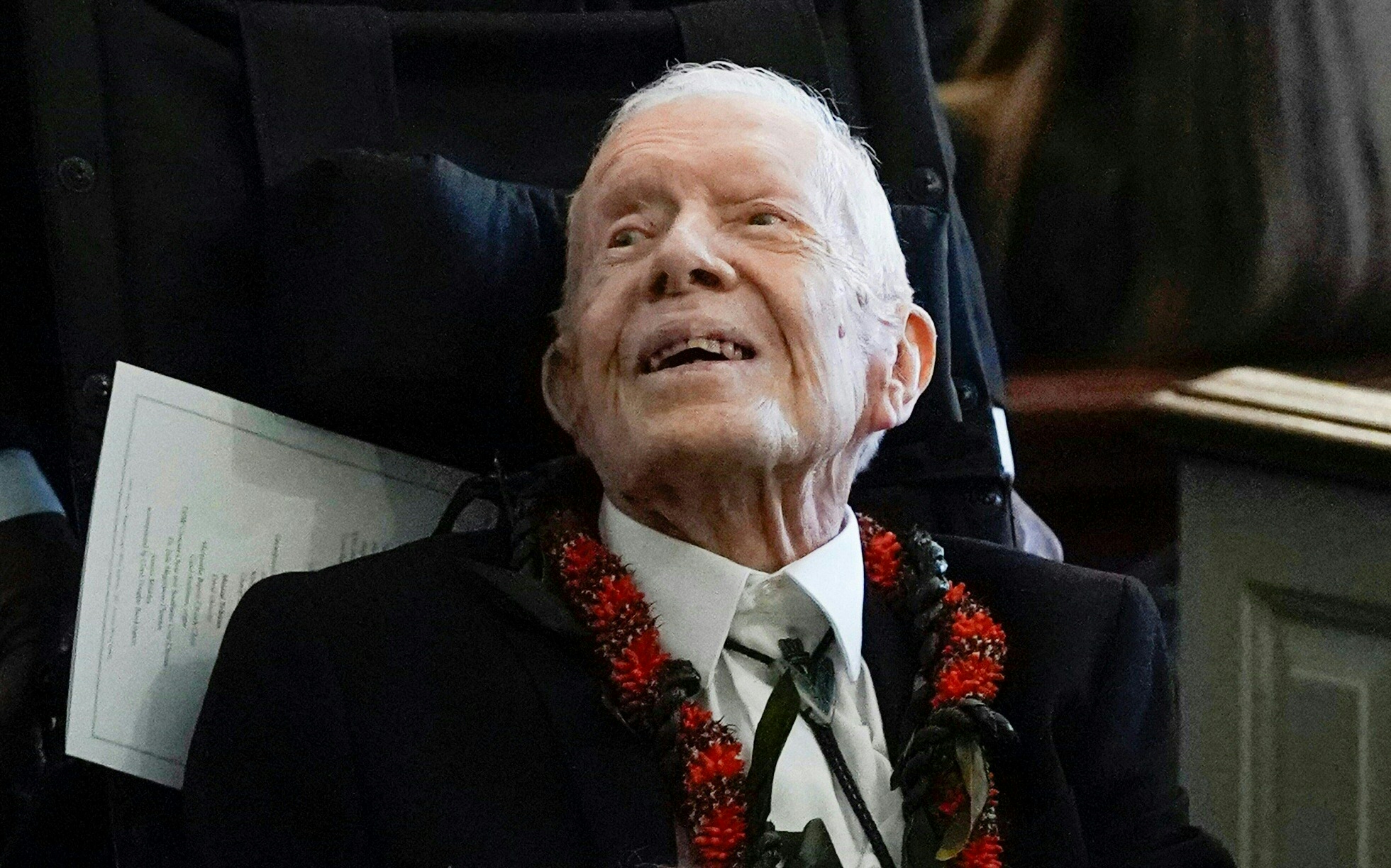
Nothing is more iconic of the traditional English gentleman than the bowler hat—otherwise known as the Coke. The first bowler was designed by London's royal hatmaker, Lock & Co., in the 1840s, and its origins were humble. The hat was commissioned by nobleman Edward Coke, younger brother of the 2nd Earl of Leicester, who wanted a hat that would better protect the gamekeepers who worked on his family estate in Norfolk. (At the time, they wore top hats, which were often knocked off by low-hanging branches or by dead pheasants falling from the skies during shooting sessions.)
In August 1849, Coke (pronounced "cook") took his problem to James Lock of Lock & Co. at the bottom of St. James's Street, London, a company that celebrates its 340th anniversary this year. Lock's hatmaker, Thomas Bowler, designed a hat with a low-domed crown, made out of stiffened and reinforced fur felt. The story is that when Coke returned to collect his hat he threw it on the floor and jumped on it—an effective if eccentric form of crash testing. Clearly satisfied with its hardiness, Coke equipped his gamekeepers with this felt "crash helmet," which is still known at Lock & Co. as the Coke. Today, keepers on the Earl of Leicester's estate are presented with a Lock Coke after their first year of service.

The hat eventually became better known as the bowler, named after its constructor, though it has a variety of other names, including the billycock and bob hat. By the mid-20th century, it was associated with the daily work wear of the city of London, favored by British bankers and stockbrokers—as well as by Oddjob in the James Bond film Goldfinger, the recently deceased actor Patrick Macnee in The Avengers and many others.
Even before Coke approached Lock & Co., the company had a reputation for finding clever solutions to headgear problems. The hatmakers had created Admiral Lord Nelson's famous bicorn hat, which he wore in the Battle of Trafalgar in 1805. His hat had a special feature: a protective shade to cover his eye after his sight was damaged following a shrapnel wound in battle.
Compared with these rather esoteric orders, my recent requirements were relatively simple. Almost 25 years ago, I had a length of tweed woven by the old Hunters of Brora mill in Scotland. As there was still some of it left, I decided to take a meter or so to Lock & Co. to have a cap made. Lock's tweed caps are legendary, not least because the company claims to have invented the word tweed. The cloth used to be known as tweel, but a Lock employee misread it as Tweed, as in the river on which the mill was located, and rewrote it as such. More recently, Lock caps received a fashion fillip when David Beckham was photographed in one, and the company's eight-piece caps are favored by the dashing British model David Gandy.
But I took my inspiration from a different fashion leader: King Edward VIII, known as the Duke of Windsor after his abdication of the British throne in December 1936. He was often painted and photographed while wearing plus fours, a Fair Isle pullover and—as a Lock client—a Turnberry cap with a crown so large that it looked like a big beret or deflated chef's toque.
Nowadays, the look is not available ready-to-wear, but Lock's cap-maker, who makes about 2,000 handmade caps a year, knew exactly what I had in mind. That is the great thing about Lock: As the world's oldest hat shop—it is in its 10th generation of family ownership—it has a kind of collective memory, in which the passage of time seems irrelevant.

A few minutes' walk from Clarence House, Prince Charles's London address, Lock & Co. has a shop front of leaded windows and a warren of rooms inside. Behind the public areas are the workshops where hats are re-blocked, steamed, brushed and stored for overseas customers who call in for their top hats during the royal meeting at Ascot racecourse. Lock moved into these premises only in 1765, so naturally they have not had time yet to remove a small furnace, still packed with the 18th-century tools used by the building's former occupant, a figurine maker.
Name an important male figure in the history of the British Isles, and he is more than likely to have been a Lock customer. Oscar Wilde, for example, chose a dramatic broad-brimmed fedora for a tour of the United States in 1882. (The Irish playwright seemed less concerned with paying for his hat than collecting it; his bill was finally settled in 2000 by a member of the Oscar Wilde Society.)
Lock & Co. is the sort of place where unusual encounters can take place: Nicolas Cage, for example, once happened to be in the shop at the same time as a descendant of Lord Nelson, who persuaded the Hollywood star to purchase a square-crowned Cambridge—a sort of flat-topped hard Coke hat popularized by Winston Churchill. During Churchill's 1952 visit to the U.S., American newspapers described his hat as "Pickwickian" and a "sawed off stovepipe." The New York Times said it was a look to be "had by anyone who is willing to pay $9.10 and who does not mind a reputation for eccentricity."
As to the origin of the Cambridge name, former Senior Director Gordon Stephenson says, "My father told me at one time the Duke of Cambridge originated this." And it just so happens that Charles, Prince of Wales, has his hats made here, while his daughter-in-law, Kate, the current Duchess of Cambridge, is a customer of the ladies' millinery department. That part of the business opened in 1993, making it, in Lock terms, very much a startup.
Uncommon Knowledge
Newsweek is committed to challenging conventional wisdom and finding connections in the search for common ground.
Newsweek is committed to challenging conventional wisdom and finding connections in the search for common ground.





